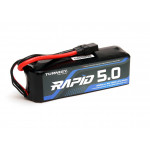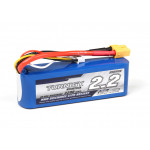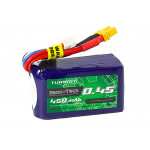
When it comes to storing your LiPo batteries, there are two aspects you need to be mindful of: the chemical aspect, and the physical aspect. Both are equally important and if either one is neglected or downplayed, your LiPos may get damaged and potentially put you in harm's way.
In this blog, we will go through everything you need to know about storing LiPos that will not only keep you safe; but also prolong your battery's cycle life.
Chemical Parameters
Unlike NiMH (Nickel-Metal Hydride) batteries, where you can indefinitely store them fully charged or fully discharged, LiPos require a very peculiar storage parameter. If you store a LiPo fully charged, this will exponentially increase the rate of a natural phenomenon known as “electrolyte decomposition”.
Electrolyte decomposition will ultimately cause your LiPos to puff up, as well as rapidly increase the internal resistance (IR) of your battery. An excessively swollen LiPo poses the risk of an inner foil rupture which can lead to a fire or an explosion; while an inflated IR will render your LiPo highly inefficient and cut into your run-times and overall cycle life.
On the other hand, if you store your LiPos undercharged, the internal makeup - anode (negative terminal) and liquid electrolyte - can get irreversibly damaged and your LiPo may never charge again.
For optimum results, you should always store your LiPos at 3.8V per cell. Using a modern LiPo charger such as the Turnigy Reaktor D6 Pro, balance charge or discharge your battery to the correct voltage - and make sure that each cell is as balanced as possible. As a rule of thumb, you should never leave your LiPos fully charged for more than 24 hours. If you know are not going to use your LiPos anytime soon, make it a habit to put them into storage mode.
Physical Parameters

You may think, “What the hell, it's just a silly battery, shove it in a drawer and it's good to go” -- nothing could be further from the truth. In fact, most LiPo problems stem from improper storage and the physical aspect is regarded by some as even more crucial.
First and foremost, you should always store your LiPos in a Fire Retardant LiPo Bag. Even when your LiPos are not in use, a chemical reaction is still taking place. External factors such as the amount of direct sunlight, temperature fluctuations, and the level of humidity can have adverse impacts on your LiPos. Hence, the simple habit of keeping them inside a LiPo Safe Bag will ensure that if anything does happen, you and the others around you are safe.
Next, you need to find a place to actually place your LiPos. Generally speaking, any shaded area which is at room temperature - 40~70°F (4 - 21°C) - is considered best practice. If you store your LiPos in a hot environment, this will ultimately cut into its cycle life. On the other hand, if you store it in an overly cold environment, you will need to slowly bring it back to room temperature for it to function at maximum capacity. And the emphasis here is “slowly” because a sudden increase in temperature will cause condensation in your battery - and lithium does not react well with water.
Taking your LiPos out of Storage
If you only stored your LiPos for a short period, then you can safely charge them up and run to the fields with no problems. However, if your LiPos have been in storage for more than six months, you should always check the Voltage (V) and Internal Resistance (IR) before charging. For regular LiPos, the voltage of each cell should not be below 3V while the IR should not exceed the original value by over 80-90%. If you want to learn more about if your LiPos are safe for use or not, read our blog 3 STEPS TO DETERMINE IF YOUR LIPOS ARE SAFE.
In Conclusion...
If you will not be using your LiPos for more than 24 hours, then put them into storage. Charge or discharge them to 3.8V per cell, securely place them into a LiPo Safe Bag, and find a shaded area that is at room temperature.
Remember, if you treat your LiPos well, they will treat you even better. When properly maintained, HobbyKing LiPos can typically last you up to 2-3 years.
---
Hear it First: Join our Mailing List
Sign up to receive new product updates, exclusive discounts, news, and more!






